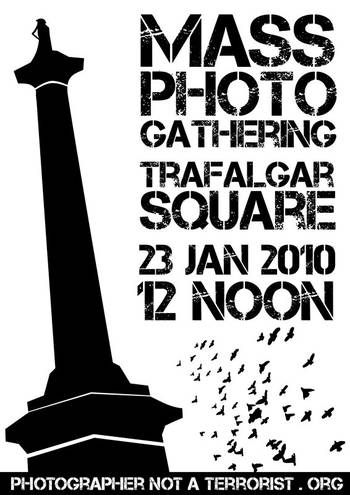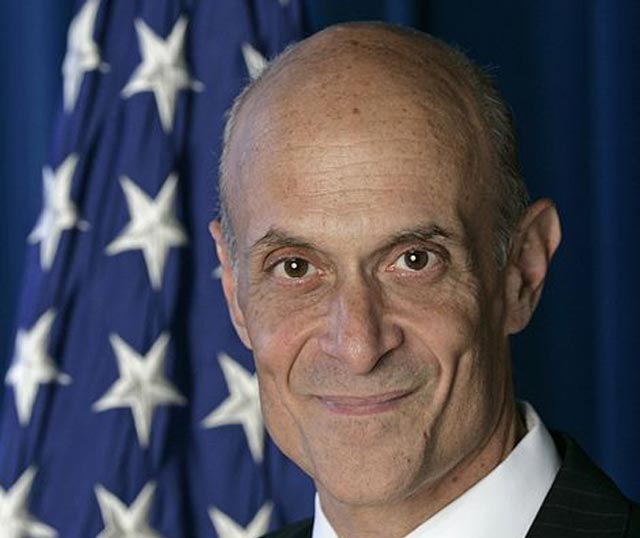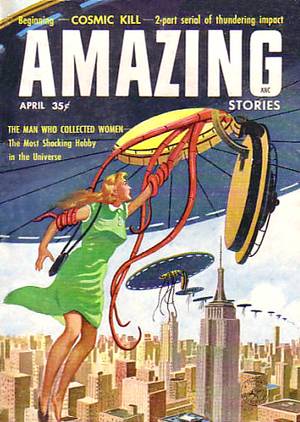The Latest from Boing Boing |  |
- Londoners: Mass photography event in Trafalgar Square today! I'm a photographer, not a terrorist
- Activist ejected from "public" meeting on secret copyright treaty for tweeting
- Remembering the golden age of pulps with Robert Silverberg
- O'Reilly drops ebook DRM, sees 104% increase in sales
- Defective by Design anti-DRM picket at Apple tablet launch
- Anti-Twilight/pro-scary vampire tees
- EFF won't give up the fight over NSA warrantless wiretapping
- Timothy Leary and William Gibson promoting a Neuromancer film
- Chertoff needs to get paid
- Why I Take Good Care of My Macintosh, by poet Gary Snyder
- Ernst Haeckel: The Intersection of Art and Science
- Google: Brin, Page will sell shares and relinquish majority voting
- Supercute! plays Misty Mountain Hop on ukulele
- Pee-Wee explains the Conan/Leno fracas
- The 37th Annual Annie Awards- Animation's Highest Honor
- Spherical video of Haiti
- Dating site OKCupid analyzes effectiveness of profile pictures
- Man experiences intense pain from nail that slid between his toes
- frog design's Apple tablet design from the early 1980s
- Did our Stone Age ancestors turn to farming all for the love of... beer?
- Tasty root vegetable looks like the larval form of the Michelin tire mascot
- Two YouTube Videos and a Mthrfckng Crossfader Dot Com
- Epic save-the-date video
- Ken Burns documentary on Conan/Leno Late Night War of 2009-2010
- Your ugly snow shovel violates our community rules
- News in Summary: The IPCC and glacier shrinkage
- Venezuelan president: US tectonic weapon caused Haiti quake
- TEDx SoMa live streaming: Marina Gorbis of Institute for the Future and others
- C'est moi Pollux
- Saturday Screening on Boing Boing: Adventures in Music
| Londoners: Mass photography event in Trafalgar Square today! I'm a photographer, not a terrorist Posted: 22 Jan 2010 11:50 PM PST  A reminder for Londoners: there's a mass photo shoot-in at midday today in Trafalgar Square, to protest English cops' continuing harassment of photographers under Section 44 of the Terrorism Act. I'll be there with the family, shooting away merrily -- hope to see you, too. A reminder for Londoners: there's a mass photo shoot-in at midday today in Trafalgar Square, to protest English cops' continuing harassment of photographers under Section 44 of the Terrorism Act. I'll be there with the family, shooting away merrily -- hope to see you, too. Mass Gathering in defence of street photography Previously:
|
| Activist ejected from "public" meeting on secret copyright treaty for tweeting Posted: 22 Jan 2010 11:46 PM PST  The latest round of negotiations over the Anti Counterfeiting Trade Agreement (ACTA -- a secret treaty that contains provisions requiring nations to wiretap the Internet, force ISPs to spy on users, search laptops at the border, and disconnect whole households from the net on the basis of mere accusation of copyright infringement) is just kicking off in Mexico, and activists from around Mexico and the world have converged on the meeting to demand transparent, public negotiations of this critical treaty. True to the secretive, crony-capitalist nature of this treaty, the organizers have done everything they can to harass and intimidate observers. Attendees at the so-called "public meeting" were booed by representatives from big business, and they ejected an activist for using Twitter to post updates on what was being said in the room. There was even an effort to force members of the public who attended the meeting to sign non-disclosure agreements, though outrage forced them to reconsider. This is not how the world makes its copyright laws. In years gone by, copyright treaties were made by the UN, in full sight of NGOs, the public and the press. Now that copyright touches everything we do on the Internet -- from political organizing to health care to basic education and communication -- we need more transparency and due process, not a retreat to smoke-filled rooms where lobbyists from privileged industry groups do an end-run around democratic process. REPTILIA: crónica de la reunión en el IMPI por Geraldine Juárez ACTA - consulta del IMPI en México (Thanks, Geraldine and Paolo!) (Image: 2propuestas para el #TwitterShowcase 24 #ACTA #openACTA, a Creative Commons Attribution image from N3T1O™'s photostream) Previously:
|
| Remembering the golden age of pulps with Robert Silverberg Posted: 22 Jan 2010 11:33 PM PST A reader writes, "An original interview with Robert Silverberg on the subject of his early work as a pulp writer and editor for Amazing magazine. Posted yesterday, for Poulpe Pulps: A Silly Website, which features pictures of the octopus in pulp art. Silverberg: what an elegant and gracious writer!" You'd be hard pressed to find a nicer guy with a drier, kinder sense of humor in science fiction; getting a chance to chat with Silverberg is always a highlight of my trips to WorldCon. Not to mention that the guy's a writing machine and a living legend. SFWA GRAND MASTER ROBERT SILVERBERG TALKS PULPS Previously: |
| O'Reilly drops ebook DRM, sees 104% increase in sales Posted: 22 Jan 2010 11:28 PM PST It's been 18 months since O'Reilly, the world's largest publisher of tech books, stopped using DRM on its ebooks. In the intervening time, O'Reilly's ebook sales have increased by 104 percent. Now, when you talk about ebooks and DRM, there's always someone who'll say, "But what about [textbooks|technical books|RPG manuals]? Their target audience is so wired and online, why wouldn't they just copy the books without paying? They've all got the technical know-how." So much for that theory. Instead, expect to hear DRM apologists (either DRM vendors or technologically naive people in publishing who believe what DRM vendors tell them) now saying, "Oh sure, it works for O'Reilly, but those are tech books. Regular trade books can't possibly work the same way!" 2009 O'Reilly Ebook Revenue up 104% (Thanks, Andrew!) Previously:
|
| Defective by Design anti-DRM picket at Apple tablet launch Posted: 22 Jan 2010 11:20 PM PST John from the Free Software Foundation sez, Support DbD at Apple's Jan. 27 "Come see our latest restriction" event in SF (Thanks, John!) Previously: |
| Anti-Twilight/pro-scary vampire tees Posted: 22 Jan 2010 11:20 PM PST  Deviant Art's FernandoLucas has knocked together a set of anti-Twilight t-shirts calling for a return to vampire fundamentals: biting, rending, tearing, and terrorizing, not snogging and crying. Deviant Art's FernandoLucas has knocked together a set of anti-Twilight t-shirts calling for a return to vampire fundamentals: biting, rending, tearing, and terrorizing, not snogging and crying. (via Super Punch) Previously:
|
| EFF won't give up the fight over NSA warrantless wiretapping Posted: 22 Jan 2010 11:20 PM PST The Electronic Frontier Foundation's had a setback in its fight to get to the bottom of the NSA's wholesale, illegal warrantless wiretapping program: "A federal judge has dismissed Jewel v. NSA, a case from the Electronic Frontier Foundation (EFF) on behalf of AT&T customers challenging the National Security Agency's mass surveillance of millions of ordinary Americans' phone calls and emails." But they're not giving up: EFF Plans Appeal of Jewel v. NSA Warrantless Wiretapping Case (Thanks, Hugh!) |
| Timothy Leary and William Gibson promoting a Neuromancer film Posted: 22 Jan 2010 08:33 PM PST Over at at the Internet Archive's Timothy Leary collection, my pal Chris Arkenberg spotted this cyberpunk flashback: a promotional video featuring Leary, William Gibson, and others promoting a film adaptation of Neuromancer that, obviously, never happened. The film was also teased on the box for the Neuromancer computer game released in 1988, dating the above video to that same period. Gibson: "To my mind at least, (Neuromancer) is really the world that we live in, just pushed a little bit." Previously: |
| Posted: 22 Jan 2010 06:56 PM PST  In an article published by the Washington Post, former Homeland Security secretary Michael Chertoff warns America of the need to install body-imaging screening machines at airports. He rails against critics of the devices, accusing them of being ideologues setting out to 'alarm the public.' At the foot of the piece, the fig leaf: "Chertoff ... is co-founder of the Chertoff Group, a security and risk-management firm whose clients include a manufacturer of body-imaging screening machines." In an article published by the Washington Post, former Homeland Security secretary Michael Chertoff warns America of the need to install body-imaging screening machines at airports. He rails against critics of the devices, accusing them of being ideologues setting out to 'alarm the public.' At the foot of the piece, the fig leaf: "Chertoff ... is co-founder of the Chertoff Group, a security and risk-management firm whose clients include a manufacturer of body-imaging screening machines." |
| Why I Take Good Care of My Macintosh, by poet Gary Snyder Posted: 22 Jan 2010 06:16 PM PST   Snip from a piece by John Markoff in the New York Times about a 79-year-old Beat Poet's ruminations on Apple. Technology journalists and Mac fanpersons breathlessly await whatever-it-is-they're-gonna-unveil next Wednesday. Gary Snyder does not, but he wrote this beautiful poem about Macs anyway: Snip from a piece by John Markoff in the New York Times about a 79-year-old Beat Poet's ruminations on Apple. Technology journalists and Mac fanpersons breathlessly await whatever-it-is-they're-gonna-unveil next Wednesday. Gary Snyder does not, but he wrote this beautiful poem about Macs anyway: Why I Take Good Care of My MacintoshRead the entire work here. Gary Snyder lives in California's Sierra Nevada foothills, without electricity, cellphones, or Twitter. More about him here. (Image: "a window to nature," a CC-licensed photograph by Flickr user jimmyroq) |
| Ernst Haeckel: The Intersection of Art and Science Posted: 22 Jan 2010 05:51 PM PST  I used to feel like the worlds of science and art were a million miles apart. But then I happened across an amazing documentary called "Proteus". It tells the story of Ernst Haeckel, who was one of the pioneers of evolutionary theory and also a fine artist. His landmark book, Kunstformen von der Natur (Art Forms in Nature) organizes living organisms of all types by pattern and shape, not taxonomic classification. Haeckel found links between jellyfish, mold spores, snapping turtles and even a tiny single celled animal called the radiolarian. In the radiolarian, he discovered a universe of beautiful shapes and patterns that put the Alhambra to shame. The "Proteus" documentary contains eye boggling animation of the thousands of types of radiolaria that Haeckel identified and documented. It just might change the way you think about the world around you. Here are digitized scans from a popular digest based on Artforms in Nature, along with links to a PDF of the entire book, as well as the Proteus DVD. Ernst Haeckel's "Natural Artforms" at the ASIFA-Hollywood Animation Archive |
| Google: Brin, Page will sell shares and relinquish majority voting Posted: 22 Jan 2010 05:23 PM PST Google has issued an SEC filing which indicates that co-founders Larry Page and Sergey Brin will begin sellling off some of their Google holdings, as part of a predetermined trading plan. They plan to sell some 10 million shares over the next five years, about 17% of their holdings, and in doing so would effectively give up majority control of the company. |
| Supercute! plays Misty Mountain Hop on ukulele Posted: 22 Jan 2010 05:23 PM PST Here's Supercute! performing a ukulecious rendition of Led Zep's "Misty Mountain Hop." (Via Bedazzled!) |
| Pee-Wee explains the Conan/Leno fracas Posted: 22 Jan 2010 04:53 PM PST If there's anyone who can Help Us Understand the Conan/Leno fracas, it's Pee-Wee Herman. (thanks, Sean) |
| The 37th Annual Annie Awards- Animation's Highest Honor Posted: 22 Jan 2010 03:57 PM PST  For the past 37 years, The International Animated Film Society, ASIFA-Hollywood has produced The Annie Awards. The Annies have grown from a small gathering of "old timers" at the bar of the Sportsman's Lodge to being animation's highest honor, a high profile event widely seen as a precursor to the Oscar picks. This year's Annie honorees include Tim Burton, Bruce Timm and Jeffrey Katzenberg; and the host for the evening is William Shatner. The ceremony takes place at Royce Hall, UCLA on Saturday February 6th. Hollywood may sometimes seem like a private party without your name on the guest list, but the animation community is totally different. Anyone who loves animation is welcome to attend the Annies, and tickets start at just $25. The event is sure to sell out this year, so order your tickets soon if you plan to attend. After the jump is a fun little video starring Spongebob Squarepants and voice actor Tom Kenny that screened at last year's Annie Awards... "Spongebob and Tom's Best Day Ever!"
|
| Posted: 22 Jan 2010 03:49 PM PST This 360-degree video view on the ground in Haiti is one of the more interesting things I've seen CNN do online. |
| Dating site OKCupid analyzes effectiveness of profile pictures Posted: 22 Jan 2010 03:23 PM PST  The data nerds at OKCupid cataloged over 7,000 photographs to find out what kinds of profile photos generated the most interest from its members. As expected, men and women should employ different strategies. For instance, it's good for young men with good abs to show off their stomachs, but its creepy for older men to flash their six-pack. For women, cleavage shots are always good, but they're even better for older women than younger women. There are differences when it comes to smiling and looking at the camera, too: Now, you're always told to look happy and make eye contact in social situations, but at least for your online dating photo, that's just not optimal advice. For women, a smile isn't strictly better: she actually gets the most messages by flirting directly into the camera, like the center and right-hand subjects above.The 4 Big Myths of Profile Pictures Previously: |
| Man experiences intense pain from nail that slid between his toes Posted: 22 Jan 2010 03:21 PM PST Mind Hacks reports that a nail penetrated the shoe of a 29-year-old construction worker, causing great pain. But the hospital workers discovered that the nail had passed harmlessly between his toes.
Mind Hacks says this is related to "somatisation disorder, where physical symptoms appear that aren't explained by tissue damage." |
| frog design's Apple tablet design from the early 1980s Posted: 22 Jan 2010 02:53 PM PST  Photos of frog design's early tablet prototypes for Apple from the 1980's. The "Bashful" -- named after the story-book elf in Snow White -- was created alongside the Apple IIe as an extension of the Snow White design language that frog Founder Hartmut Essligner helped create for the company in 1983. Concepts for this early pre-touch tablet included one with an attached keyboard and one with a floppy disk drive and convenient handle for maximum portability. An attached stylus helped the user interact with the screen. One frog/Apple tablet concept also included an attached phone.From the Archives: frog's Early Apple Tablet |
| Did our Stone Age ancestors turn to farming all for the love of... beer? Posted: 22 Jan 2010 02:53 PM PST The wonderful Arts and Letters Daily points to an article in Der Spiegel: Did our Neolithic ancestors start to grow crops in pursuit of... beer? Imagine: a hairy Stone Age-r picks up a rotten piece of fruit and munches. "As alcohol entered the bloodstream, the brain started sending out a new message—whatever that was, I want more of it!" |
| Tasty root vegetable looks like the larval form of the Michelin tire mascot Posted: 22 Jan 2010 02:48 PM PST  When I saw these photos, I thought Erik and Kelly of Homegrown Evolution had started eating grubs. But it turns out these are crosne. This week I just completed the world's smallest harvest of a root vegetable popularly known as crosne (Stachys affinis). Crosne, also known as Chinese artichoke, chorogi, knotroot and artichoke betony is a member of the mint family that produces a tiny edible tubor. While looking like any other mint plant, the leaves have no smell. The tubers look all too much like the larval form of the Michelin tire mascot and have the taste and texture of a Jerusalem artichoke.That ain't a bowl full of larvae, it's crosne! |
| Two YouTube Videos and a Mthrfckng Crossfader Dot Com Posted: 22 Jan 2010 02:47 PM PST |
| Posted: 22 Jan 2010 02:33 PM PST I respect any woman who dresses up like Ernst Blofeld in her wedding announcement. And the rest of the video is pretty awesome, too. (And, no, I do not personally know this couple—though I kind of wish that I did.) Jeff Wong and Erin Martin Get Married (Thanks, Wade Kwon!) |
| Ken Burns documentary on Conan/Leno Late Night War of 2009-2010 Posted: 22 Jan 2010 03:12 PM PST |
| Your ugly snow shovel violates our community rules Posted: 22 Jan 2010 01:52 PM PST Is a snow shovel left on the front porch a violation of neighborhood association laws? This email exchange shows what happens when suburbanites stop being polite ... and start getting real.(Thanks, Mark B.!) |
| News in Summary: The IPCC and glacier shrinkage Posted: 22 Jan 2010 01:36 PM PST  Over the course of this week, you've probably heard at least a little about the controversy surrounding a mistake in the IPCC's 4th Assessment Report from 2007. Short version: The Working Group II section, which covers observed and projected impacts of climate change, states that Himalayan glaciers are "very likely" to disappear by 2035. Glaciologists say that's bogus. And the IPCC report, itself, sources the claim to a position paper put out by the World Wildlife Fund, rather than any peer-reviewed research. The error was first pointed out by scientists within the climate research community. As of yesterday, the IPCC has apologized, and is reviewing how such a sketchily sourced factoid made it into the final report. So what should you take away from this incident? Two things:
It's a mistake. But mistakes happen, and this really isn't even a big one. The real problem lies in how the IPCC responded to criticism Where'd this all come from? Check out my IPCC Glacier Controversy reading list:
Image courtesy Flickr user ricardo.martins, via CC Previously:
|
| Venezuelan president: US tectonic weapon caused Haiti quake Posted: 22 Jan 2010 01:00 PM PST  On Monday, BB contributor Arthur Goldwag posted a survey of conspiracy theories around the Haiti earthquake, mostly rants about how a US weather weapon disguised as an atmospheric research system in Alaska called HAARP (image above) actually triggered the catastrophe. Now, Venezuelan president Hugo Chavez has reportedly jumped on the bandwagon, blaming the earthquake on a test of the "tectonic weapon." From PressTV: President Chavez said the US was "playing God" by testing devices capable of creating eco-type catastrophes, the Spanish newspaper ABC quoted him as saying.Chavez says US 'weapon' caused Haiti quake |
| TEDx SoMa live streaming: Marina Gorbis of Institute for the Future and others Posted: 22 Jan 2010 12:57 PM PST  TEDx is a new series of local, independent, self-organized TED-esque conferences in small group settings. Today is TEDxSoMa in San Francisco. There's a diverse group of smart folks slated to speak for ten minutes each, including Aardvark co-founder Damon Horowitz, Lucas Licensing's Howard Roffman, graphic recording and visualization pioneer David Sibbet, and my dear friend and colleague Marina Gorbis, executive director of Institute for the Future. Yesterday, I got a sneak preview of Marina's presentation, titled "Digital Mirrors," about how our daily lives may be changed by the massive amounts of data about ourselves that will become collected and available through pervasive networks, sensors, and augmented reality. It's a very smart and funny performance piece. (Above is one of her slides.) The program streams live starting in one hour, 1pm PST, and Marina is on at 4:30pm. TEDxSoMa "IFTF Executive Director Marina Gorbis to speak today at 4:30 (PST) TEDxSoMa" |
| Posted: 22 Jan 2010 12:06 PM PST You know what English sounds like to people who cannot understand it, but have you heard how people from abroad make fun of English, as a foreign accent in their own languages? Exhibit A: The star of 1970s childrens' TV classic The Magic Roundabout is better known to English speakers as Dougal. But in the original French scripts he was Pollux, a stupendously British dog. A thousand years of mutual resentment are summed up in every cheeky round of "Oh Oh Oh!" that graces this lovely pop song based on the character. |
| Saturday Screening on Boing Boing: Adventures in Music Posted: 22 Jan 2010 12:31 PM PST  Last weekend, I had a great time hosting The Boing Boing Cartoon Circus. This Saturday afternoon, I'll be presenting an all new show... Adventures in Music. A lot of college students volunteer at the ASIFA-Hollywood Animation Archive. I always ask what sort of music they listen to. Usually, they admit that they've never really listened to any music earlier than the Beatles. This is a shame, because as good as current music is, the history of music from the first half of the 20th century holds many more treasures. Animators in particular need to be aware of that history. Music has been an integral part of animation since before the era of the talkies. Animation timing is built on a musical beat. Music isn't just fun... it's important. Late last year, I created a series of screenings for Woodbury University to expose their students to the best of 20th century music. Saturday afternoon, I'll share a lot of that great stuff with you right here on Boing Boing. Don't miss Adventures in Music! |
| You are subscribed to email updates from Boing Boing To stop receiving these emails, you may unsubscribe now. | Email delivery powered by Google |
| Google Inc., 20 West Kinzie, Chicago IL USA 60610 | |

 RS: Back in my pulp-mag days I worked from about 8:30 to noon, took an hour off for lunch, and worked again from one to three, for a work day of five and a half hours or so. I wrote 20 to 30 pages of copy in that time, doing it all first draft, so that I was able to produce a short story of 5000-7500 words in a single day. If I had 3000-worders to do, I usually wrote one before lunch and one after lunch. At three o'clock I poured myself a shot of rum or mixed a martini, put a record on, and sat down to relax until dinnertime, reading and perhaps sketching out the next day's work on a scrap of paper. This was the Tuesday-to-Friday routine. I never worked on Saturday or Sunday.
RS: Back in my pulp-mag days I worked from about 8:30 to noon, took an hour off for lunch, and worked again from one to three, for a work day of five and a half hours or so. I wrote 20 to 30 pages of copy in that time, doing it all first draft, so that I was able to produce a short story of 5000-7500 words in a single day. If I had 3000-worders to do, I usually wrote one before lunch and one after lunch. At three o'clock I poured myself a shot of rum or mixed a martini, put a record on, and sat down to relax until dinnertime, reading and perhaps sketching out the next day's work on a scrap of paper. This was the Tuesday-to-Friday routine. I never worked on Saturday or Sunday.  During the past 18 months we've seen a dramatic shift in customer preference from print to digital when looking at sales from oreilly.com, which is a substantial sales channel for us. And looking across all of our sales channels for individual ebooks -- including mobile apps -- 2009 ebook revenue was up a staggering 104% on 2008 (which was more than 50% above 2007).
During the past 18 months we've seen a dramatic shift in customer preference from print to digital when looking at sales from oreilly.com, which is a substantial sales channel for us. And looking across all of our sales channels for individual ebooks -- including mobile apps -- 2009 ebook revenue was up a staggering 104% on 2008 (which was more than 50% above 2007).  Apple has invited the media to "come see our latest creation" at San Francisco's Yerba Buena Center for the Arts Theater this Wednesday, but given their recent track record with the iPhone's DRM and App Store policies, it's more likely to be "come see our latest restriction."
Apple has invited the media to "come see our latest creation" at San Francisco's Yerba Buena Center for the Arts Theater this Wednesday, but given their recent track record with the iPhone's DRM and App Store policies, it's more likely to be "come see our latest restriction."  "The alarming upshot of the court's decision is that so long as the government spies on all Americans, the courts have no power to review or halt such mass surveillance even when it is flatly illegal and unconstitutional," said EFF Senior Staff Attorney Kevin Bankston. "With new revelations of illegal spying being reported practically every other week -- just this week, we learned that the FBI has been unlawfully obtaining Americans' phone records using Post-It notes rather than proper legal process -- the need for judicial oversight when it comes to government surveillance has never been clearer."
"The alarming upshot of the court's decision is that so long as the government spies on all Americans, the courts have no power to review or halt such mass surveillance even when it is flatly illegal and unconstitutional," said EFF Senior Staff Attorney Kevin Bankston. "With new revelations of illegal spying being reported practically every other week -- just this week, we learned that the FBI has been unlawfully obtaining Americans' phone records using Post-It notes rather than proper legal process -- the need for judicial oversight when it comes to government surveillance has never been clearer."  A builder aged 29 came to the accident and emergency department having jumped down on to a 15 cm nail. As the smallest movement of the nail was painful he was sedated with fentanyl and midazolam. The nail was then pulled out from below. When his boot was removed a miraculous cure appeared to have taken place. Despite entering proximal to the steel toecap the nail had penetrated between the toes: the foot was entirely uninjured.
A builder aged 29 came to the accident and emergency department having jumped down on to a 15 cm nail. As the smallest movement of the nail was painful he was sedated with fentanyl and midazolam. The nail was then pulled out from below. When his boot was removed a miraculous cure appeared to have taken place. Despite entering proximal to the steel toecap the nail had penetrated between the toes: the foot was entirely uninjured.
No comments:
Post a Comment